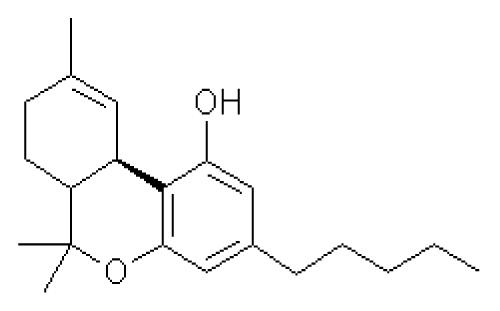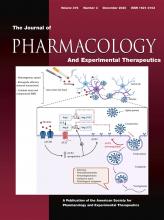
“Marijuana, also known as cannabis, is a plant-based illicit drug notorious for its recreational purposes. However, in recent years its extracts are being extensively studied for their overall therapeutic effects. Active substances found in marijuana that interact with the endocannabinoid system are known as cannabinoids, the primary examples being 9-tetrahydrocannabinol (9-THC) and Cannabidiol (CBD). These cannabinoids ligand to receptors such as CB1 (found in CNS) and CB2 (found in immune system cells) to prevent the release of neurotransmitters and modulate immune cell migration as well as cytokine release, respectively (1). In recent years, there has been a surge of interest in the neuroprotective potential of marijuana; however, investigators could not make firm conclusions about the effectiveness of these treatments. A comprehensive review by Bahji A et al. (2022) found an evident link between cannabidiol-based products and relief from the motor as well as behavioural and psychological symptoms spanning Alzheimer’s disease (AD), Huntington’s disease (HD), and Parkinson’s disease (PD) (2). Here we discuss the effects of marijuana and its derivatives on the treating significant neurodegenerative disorders.
Dronabinol (2.5 mg) seemed to lessen the disordered behaviours as assessed by the Cohen-Mansfield Agitation Inventory in 12 patients of AD (p=0.05) (3). Sherman et al. (2018) reported the association of cannabis administration with weight and pain management in AD patients. The adverse effects are typically well tolerated at the levels supplied, even though cannabis is linked to an increased risk of euphoria, sleepiness and psychosis (1). On the other hand, for HD, nabilone (1 or 2 mg) had a substantial therapeutic benefit in a different 10-week placebo-controlled crossover experiment as determined by the overall motor and chorea score on the Unified Huntington’s Disease Rating Scale (UHDRS) (4). Available reviews revealed variable evidence suggesting the clinical benefits of cannabis in treating motor symptoms in patients with PD. A randomized trial found that compared to a placebo, giving a single dosage of 300 mg of CBD successfully decreased tremor amplitude (5).
Neurological diseases, including the neurodegenerative diseases, comprise 8.7% of the disease burden in lower- middle- income countries (such as Pakistan) (6). Currently, there is no real cure for neurodegenerative disorders, only symptomatic management, such as dopamine treatment for PD or cholinesterase inhibitors for dementia. Cannabinoids might be the lifeline all neurodegenerative disorder patients have been waiting for.”
https://pubmed.ncbi.nlm.nih.gov/37218269/
https://ojs.jpma.org.pk/index.php/public_html/article/view/7805





 “The Endocannabinoid System (ECS) is primarily responsible for maintaining homeostasis, a balance in internal environment (temperature, mood, and immune system) and energy input and output in living, biological systems.
“The Endocannabinoid System (ECS) is primarily responsible for maintaining homeostasis, a balance in internal environment (temperature, mood, and immune system) and energy input and output in living, biological systems.  “Medical cannabis and individual cannabinoids, such as tetrahydrocannabinol (THC) and cannabidiol (CBD), are receiving growing attention in both the media and the scientific literature. The Cannabis plant, however, produces over 100 different cannabinoids, and cannabigerol (CBG) serves as the precursor molecule for the most abundant phytocannabinoids.
“Medical cannabis and individual cannabinoids, such as tetrahydrocannabinol (THC) and cannabidiol (CBD), are receiving growing attention in both the media and the scientific literature. The Cannabis plant, however, produces over 100 different cannabinoids, and cannabigerol (CBG) serves as the precursor molecule for the most abundant phytocannabinoids. “The aberrant accumulation of disease-specific protein aggregates accompanying cognitive decline is a pathological hallmark of age-associated neurological disorders, also termed as proteinopathies, including Alzheimer’s disease, Parkinson’s disease, Huntington’s disease, amyotrophic lateral sclerosis and multiple sclerosis.
“The aberrant accumulation of disease-specific protein aggregates accompanying cognitive decline is a pathological hallmark of age-associated neurological disorders, also termed as proteinopathies, including Alzheimer’s disease, Parkinson’s disease, Huntington’s disease, amyotrophic lateral sclerosis and multiple sclerosis. “We aimed to comprehensively evaluate the effects of medical marijuana on symptoms that are relevant to movement disorders with a focus on Huntington disease (HD).
“We aimed to comprehensively evaluate the effects of medical marijuana on symptoms that are relevant to movement disorders with a focus on Huntington disease (HD). “In the last few years research into Cannabis and its constituent phytocannabinoids has burgeoned, particularly in the potential application of novel cannabis phytochemicals for the treatment of diverse illnesses related to neurodegeneration and dementia, including Alzheimer’s (AD), Parkinson’s (PD) and Huntington’s disease (HD). To date, these neurological diseases have mostly relied on symptomatological management. However, with an aging population globally, the search for more efficient and disease-modifying treatments that could delay or mitigate disease progression is imperative. In this context, this review aims to present a state of art in the research with cannabinoids and novel cannabinoid-based drug candidates that have been emerged as novel promising alternatives for drug development and innovation in the therapeutics of a number of diseases, especially those related to CNS-disturbance and impairment.”
“In the last few years research into Cannabis and its constituent phytocannabinoids has burgeoned, particularly in the potential application of novel cannabis phytochemicals for the treatment of diverse illnesses related to neurodegeneration and dementia, including Alzheimer’s (AD), Parkinson’s (PD) and Huntington’s disease (HD). To date, these neurological diseases have mostly relied on symptomatological management. However, with an aging population globally, the search for more efficient and disease-modifying treatments that could delay or mitigate disease progression is imperative. In this context, this review aims to present a state of art in the research with cannabinoids and novel cannabinoid-based drug candidates that have been emerged as novel promising alternatives for drug development and innovation in the therapeutics of a number of diseases, especially those related to CNS-disturbance and impairment.”